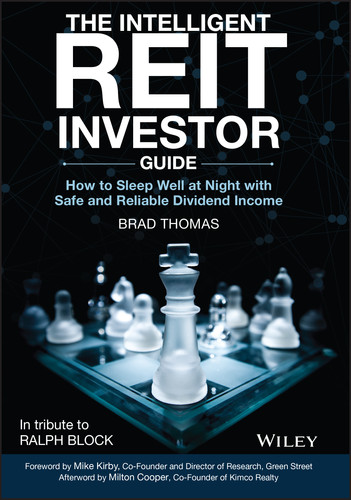Demystify real estate investment trusts with this masterful guide from an industry expert. In The Intelligent REIT Investor Guide, author Brad Thomas walks you through both basic and advanced topics in the profitable, sustainable world of real estate investment trusts. From historical industry performance to the equations needed to calculate key metrics in REIT stocks, this book covers the history, vocabulary, principles, and analysis you’ll need to invest wisely in this growing asset class. Find out how you can strengthen your investment decisions and conclusions with publicly traded REITs in the short- and long-terms alike. With this book you’ll: Perfect for personal and professional investors alike, The Intelligent REIT Investor Guide is an invaluable guide to a crucial asset class that is often overlooked or poorly understood despite its undeniable impact on portfolios over the past 60 years.
Table of Contents
- Cover
- Title Page
- Copyright
- Dedication
- Acknowledgments
- A Building Block for REITs
- CHAPTER 1: REITs: What They Are and How They Work
- CHAPTER 2: REITs Versus Competitive Investments
- CHAPTER 3: REITs over the Decades
- CHAPTER 4: Residential REITs
- CHAPTER 5: Retail REITs
- CHAPTER 6: Office, Healthcare, Self‐Storage, and Lodging REITs
- CHAPTER 7: Technology REITs
- CHAPTER 8: Specialized REITs
- CHAPTER 9: REITs: Mysteries and Myths
- CHAPTER 10: REITs: Growth and Value Creation
- CHAPTER 11: Searching for Blue Chips
- CHAPTER 12: Breaking Down the REIT Balance Sheet
- CHAPTER 13: REIT Preferred Stocks
- CHAPTER 14: The Quest for Investment Value
- CHAPTER 15: Building a REIT Portfolio
- CHAPTER 16: Investing in Global REITs
- CHAPTER 17: Management Matters
- Afterword
- The Intelligent REIT Glossary
- Contributor Biographies
- Index
- End User License Agreement
